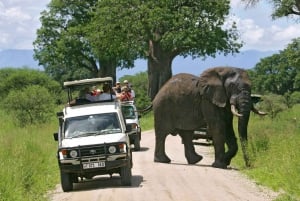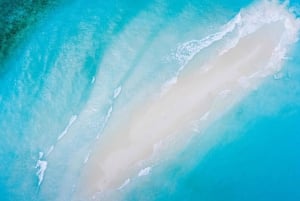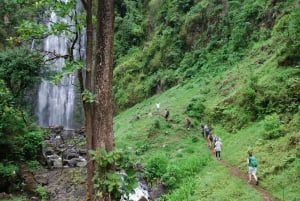Weather Overview
When planning a holiday to Tanzania it is recommended that travel should be between June and October when temperatures are warm and mild, especially if visiting Dar es Salaam, Zanzibar and other coastal towns. While on safari remember to pack warm clothes as the evenings are quite chilly. From December to March the weather is much warmer but can still make for an enjoyable holiday, if you can beat the heat (and the humidity on the coast)! Be prepared for lots of rain if you visit in April and May as this is when Tanzania has the long rains (an umbrella and a raincoat is highly recommended).
Between June to October, temperatures can drop as low as 10°C in the northern region and reach as high as 23°C on the coast. During this time temperatures can sometimes reach below 0°C when climbing the heights of Mount Kilimanjaro. On the plains of National Parks and Game Reserves the temperatures are warm and mild, making this a very popular time to visit. Beautiful sunny days are normal when visiting the safari circuits and can offer some striking sunsets, which are ideal for photography. The clear skies are also fantastic for star gazing in the bush wilderness. These months are by far the best time to visit the coast as the weather is quite balmy and sunny for much of the day with cool ocean breezes in the evenings.

The days are quite hot and sunny from November to March with smaller amounts of rainfall (short rains). Due to the temperatures ranging from the mid 20's to the low 30's throughout most of Tanzania, the National Parks and coastal beaches are popular destinations by visitors escaping the colder climates of the northern hemisphere. On the shores of the Swahili Coast, the Indian Ocean reaches its highest temperatures and is ideal for swimming at any time of day or night. Remember that this is the hottest time of the year to visit the coast so the humidity levels can also become quite high, especially after a rainfall!
Not sure what to pack for a Tanzanian safari? Visit our "What to Wear & What to Pack" page on our website.
Tanzania’s Temperature Ranges and Average Rainfall

Tanzania has two rainfall seasons for each year: the masika, or long rains that fall from mid-March to the end of May, and the mvuli, or short rains, that come intermittently throughout November and parts of December, and sometimes stretch into early January. During the long rains quite a few of the remote hotels and lodges in the National Parks close down due to the logistics of transporting visitors (vehicles being stuck in mud or airstrips being waterlogged). Please remember to bear this in mind when planning your travels to Tanzania!
| | Jan | Feb | Mar | Apr | May | Jun | Jul | Aug | Sep | Oct | Nov | Dec |
Arusha
(altitude 1400m) | | | | | | | | | | | | |
| Degrees C | 14-28 | 14-29 | 15-28 | 16-25 | 15-23 | 13-22 | 12-22 | 13-23 | 12-25 | 14-27 | 15-27 | 14-27 |
| Rainy days/mm | 8/70 | 8/75 | 12/140 | 19/225 | 12/85 | 4/15 | 3/10 | 2/6 | 2/10 | 4/25 | 10/125 | 11/100 |
Dar es Salaam
(Sea Level) | | | | | | | | | | | | |
| Degrees C | 23-32 | 23-32 | 23-32 | 22-31 | 21-30 | 19-29 | 18-29 | 18-29 | 18-30 | 20-31 | 21-31 | 23-32 |
| Rainy days/mm | 7/80 | 5/60 | 12/130 | 19/265 | 13/180 | 5/40 | 5/30 | 4/25 | 5/25 | 6/60 | 8/120 | 9/110 |
Kigoma
(Altitude 781m) | | | | | | | | | | | | |
| Degrees C | 19-28 | 19-28 | 19-28 | 20-28 | 19-29 | 17-29 | 16-29 | 17-30 | 19-30 | 20-29 | 19-28 | 19-28 |
| Rainy days/mm | 9/75 | 8/75 | 9/60 | 11/100 | 6/20 | 0/0 | 0/0 | 1/10 | 2/20 | 9/70 | 12/120 | 12/155 |
Mbeya
(Altitude 1700m) | | | | | | | | | | | | |
| Degrees C | 14-23 | 14-24 | 13-24 | 12-23 | 9-22 | 5-22 | 5-22 | 6-23 | 9-23 | 12-27 | 13-26 | 13-24 |
| Rainy days/mm | 20/200 | 18/170 | 18/170 | 14/110 | 4/20 | 0/1 | 0/0 | 0/0 | 1/5 | 2/15 | 7/65 | 8/180 |
Zanzibar
(Sea Level) | | | | | | | | | | | | |
| Degrees C | 22-32 | 24-32 | 25-32 | 25-30 | 23-28 | 23-28 | 22-27 | 22-28 | 22-28 | 22-30 | 23-31 | 24-31 |
| Rainy days/mm | 5/75 | 5/60 | 8/150 | 11/350 | 10/280 | 4/55 | 2/45 | 2/40 | 3/50 | 4/90 | 9/170 | 8/145 |
Vehicles stuck in the mud during the long rainy season!

 21 °C
21 °C
 light rain
light rain light rain
light rain light rain
light rain light rain
light rain broken clouds
broken clouds scattered clouds
scattered clouds broken clouds
broken clouds broken clouds
broken clouds broken clouds
broken clouds light rain
light rain light rain
light rain overcast clouds
overcast clouds broken clouds
broken clouds scattered clouds
scattered clouds few clouds
few clouds clear sky
clear sky clear sky
clear sky few clouds
few clouds few clouds
few clouds scattered clouds
scattered clouds scattered clouds
scattered clouds scattered clouds
scattered clouds few clouds
few clouds clear sky
clear sky few clouds
few clouds clear sky
clear sky clear sky
clear sky few clouds
few clouds few clouds
few clouds clear sky
clear sky clear sky
clear sky clear sky
clear sky clear sky
clear sky clear sky
clear sky few clouds
few clouds overcast clouds
overcast clouds overcast clouds
overcast clouds















